Test Bench: GAIT BGD-D72-64-4-0A1 Glass Diaphragm 1″ Dome Tweeter
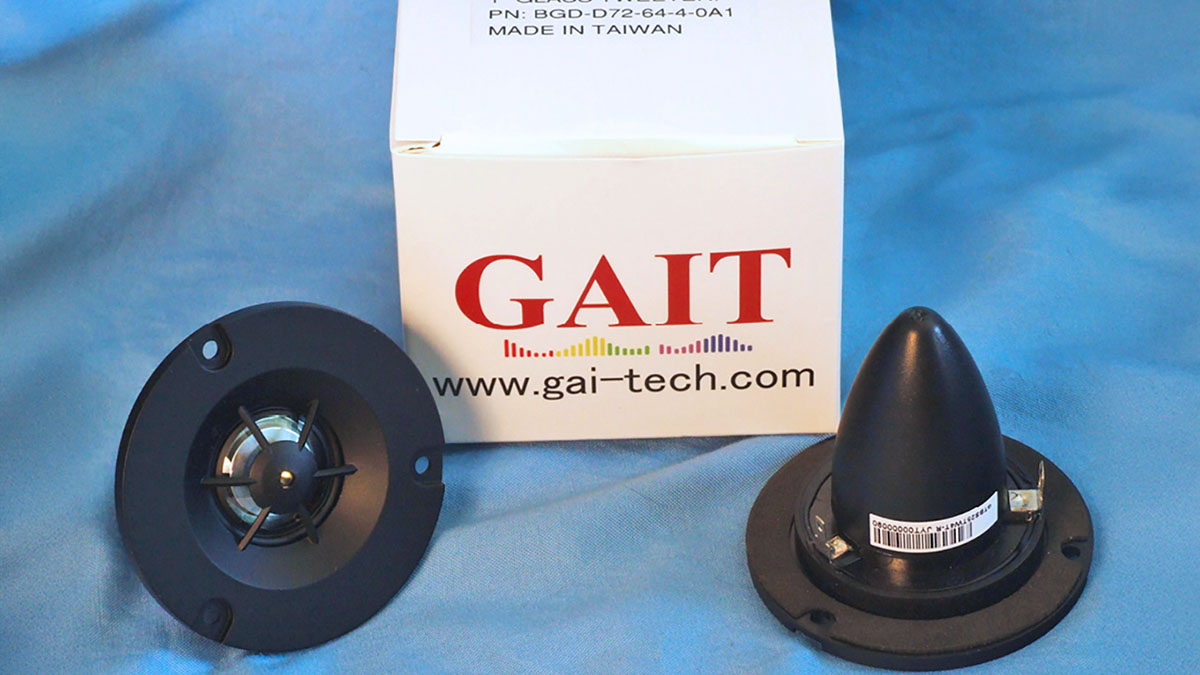
Glass Acoustic Innovations Technologies (GAIT) is a company from Taiwan and a renowned specialist in Ultra-Thin Glass (UTG) diaphragm technology, quickly gaining recognition in hifi and high-end audio circles. This 1″ dome super tweeter uses a unique glass diaphragm formed using a chemical strengthening process, and includes a 1” voice coil and neodymium magnet motor, assembled with an injection-molded plastic faceplate, a phase plug, and a damped rear chamber.
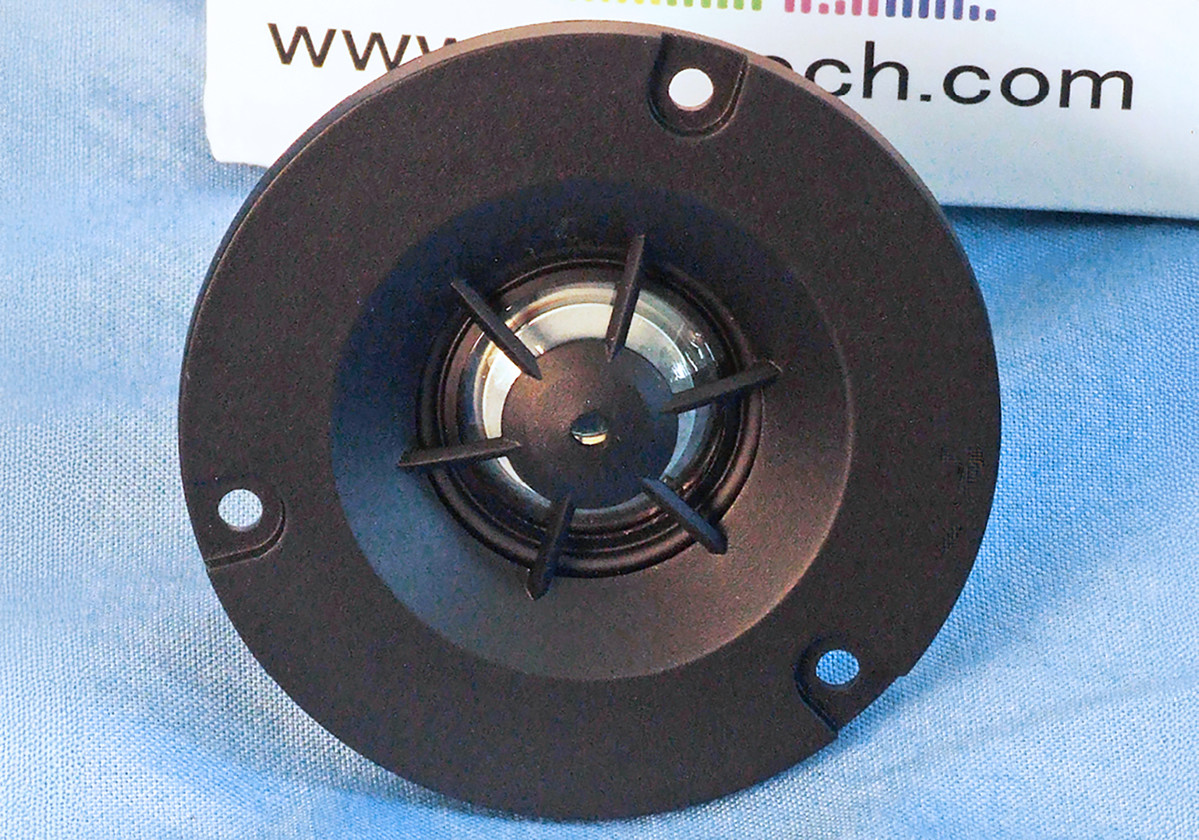
Figure 1 depicts the various steps in the glass diaphragm forming process. The key to the success of the unique diaphragm format is the chemical strengthening of the glass acoustic diaphragms. This process not only enhances the strength of the glass but also allows for control of damping effects through increased reinforcement depth at different areas of the diaphragm. Figure 2 compares a tweeter dome response of three materials — titanium, aluminum, and GAIT glass — and illustrates the enhanced damping properties of glass modified with chemical surface treatment. The same damping properties apply to a cone diaphragm as seen in Figure 3, showing the high-frequency damping comparison between an aluminum cone and a GAIT glass cone.

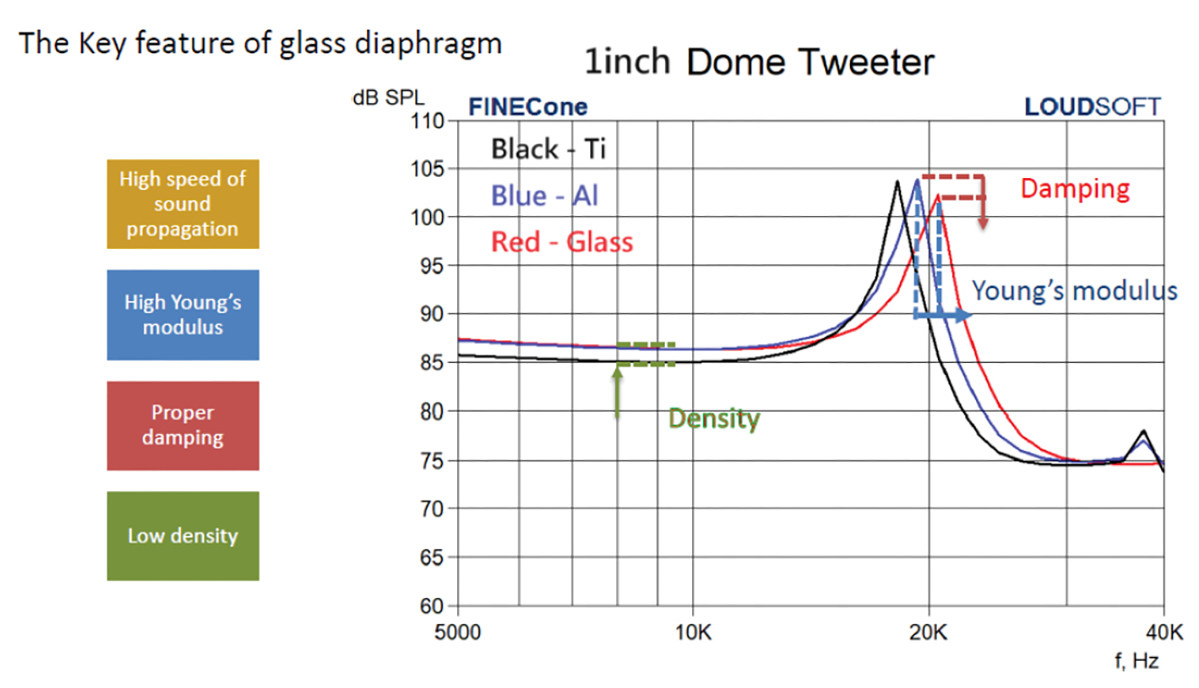
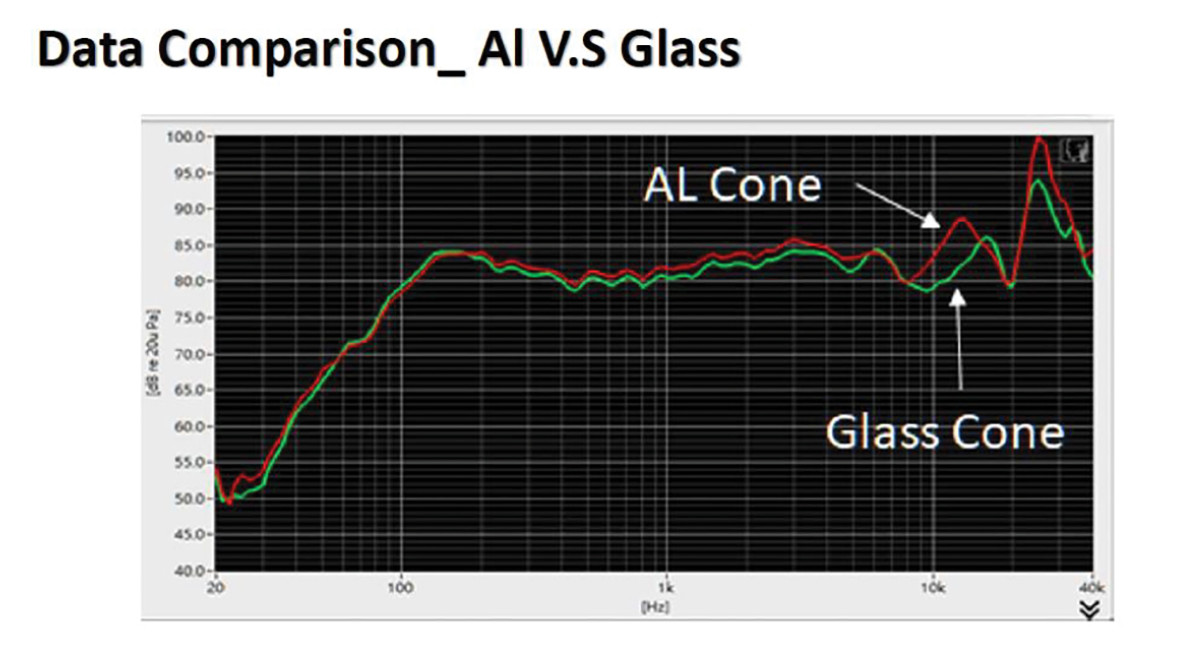
The transducer GAIT submitted to Voice Coil was the BGD-D72-64-4-0A1 super tweeter. Features for the BGD super tweeter include a 1” (26mm) diameter glass dome diaphragm, 1” diameter 4Ω voice coil, 90dB sensitivity, 20W rated power handling, and a 2kHz to 30kHz frequency range, and a neodymium magnet motor. Other features include an injection-molded plastic faceplate, a phase plug, and a damped rear chamber.
Testing commenced using the LinearX LMS analyzer to produce the 300-point impedance sweep for the GAIT BGD-D72-64-4-0A1 super tweeter depicted in Figure 4. This impedance curve exhibits two resonances—the primary resonance for the GAIT BGD-D72-64-4-0A1 super tweeter occurs at 650Hz, and 2.25kHz for the secondary resonance. Factory quoted F0 for the 1.5kHz, which is approximately the minimum between the two resonance peaks, somewhat like the tuning fb of a vented cabinet. The measured DCR for the 4Ω tweeter was 2.93Ω with a minimum impedance above resonance of 4Ω at 4.5kHz.
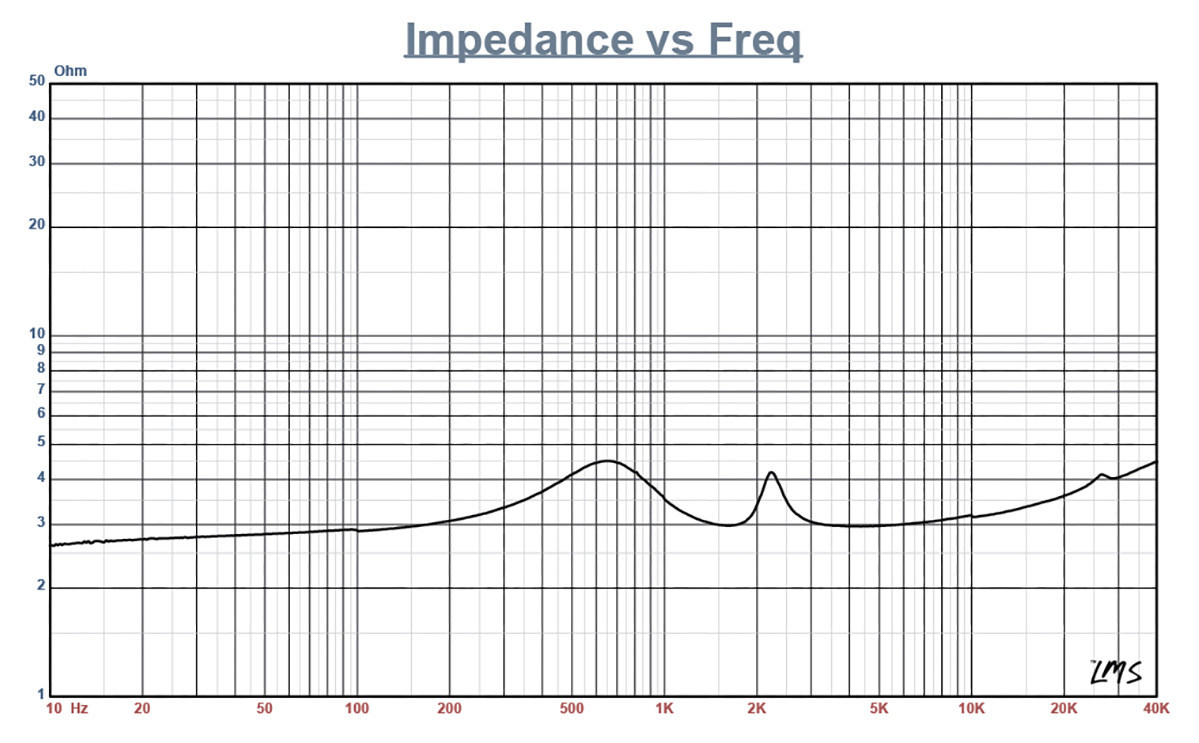
Next, I recess mounted the GAIT glass dome tweeter in an enclosure that had a baffle area of 12”×7” and measured the horizontal on- and off-axis at 2.0V/0.5m (normalized to 2.83V/1m) from 0° on-axis to 45° off-axis using the Loudsoft FINE R+D analyzer and the GRAS 46BE microphone (supplied courtesy of Loudsoft and GRAS Sound & Vibration). Figure 5 shows the on-axis response for the GAIT BGD-D72-64-4-0A1 tweeter, which exhibited a ±2.6dB response from 2.2kHz to 18kHz, with the overall response extending to 40kHz.
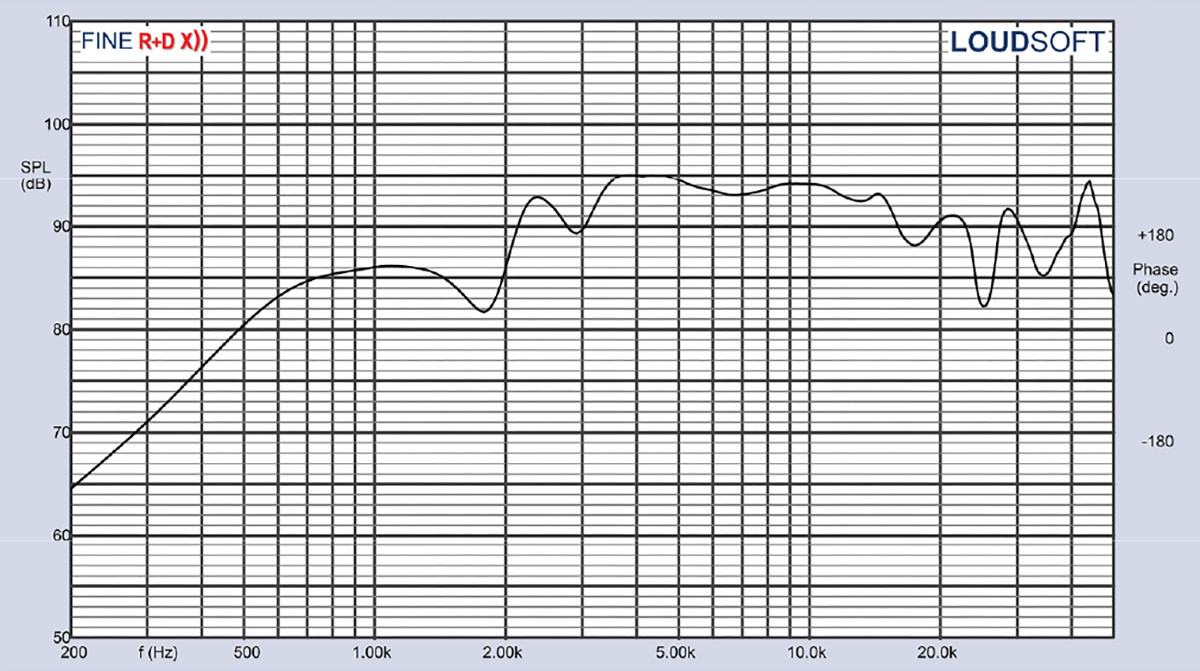
Figure 6 depicts the on- and off-axis response of the GAIT BGD-D72-64-4-0A1. Figure 7 shows the off-axis curves normalized to the on-axis response, and Figure 8 shows the 180° horizontal polar plot (in 10° increments with 1/3 octave smoothing applied) that was generated by the CLIO Pocket analyzer and accompanying microphone (courtesy of Audiomatica SRL). Last, Figure 9 gives the two-sample SPL comparison showing the two GAIT BGD-D72-64-4-0A1 samples to be matched within ≤3dB between 2kHz to 21kHz.
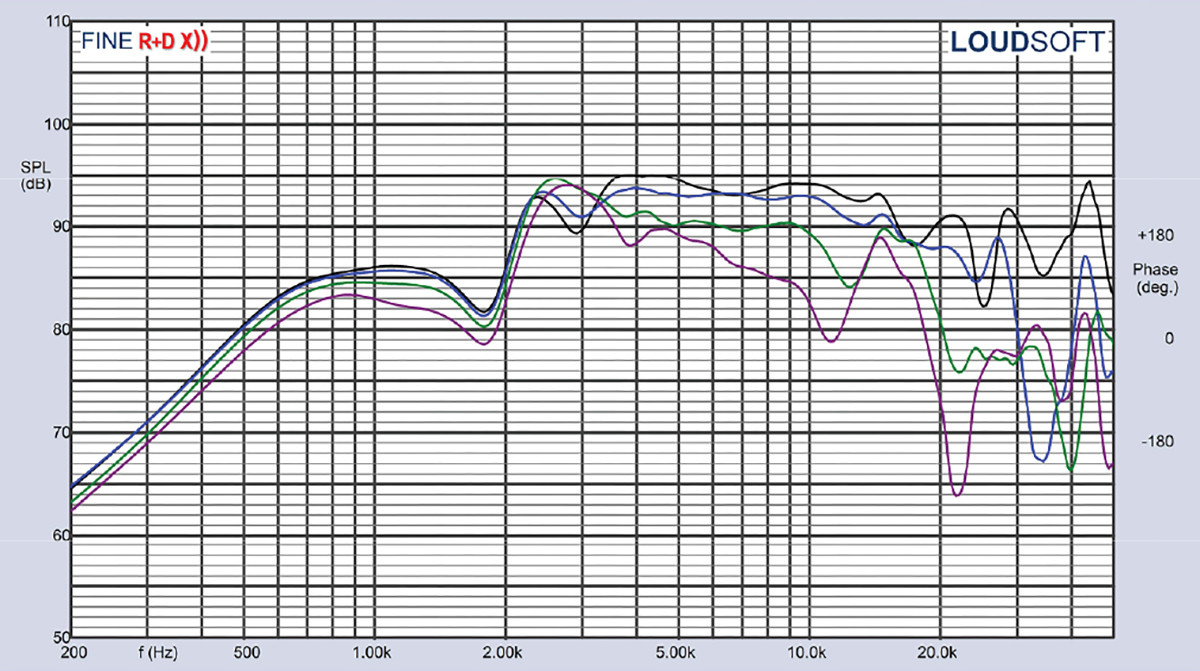
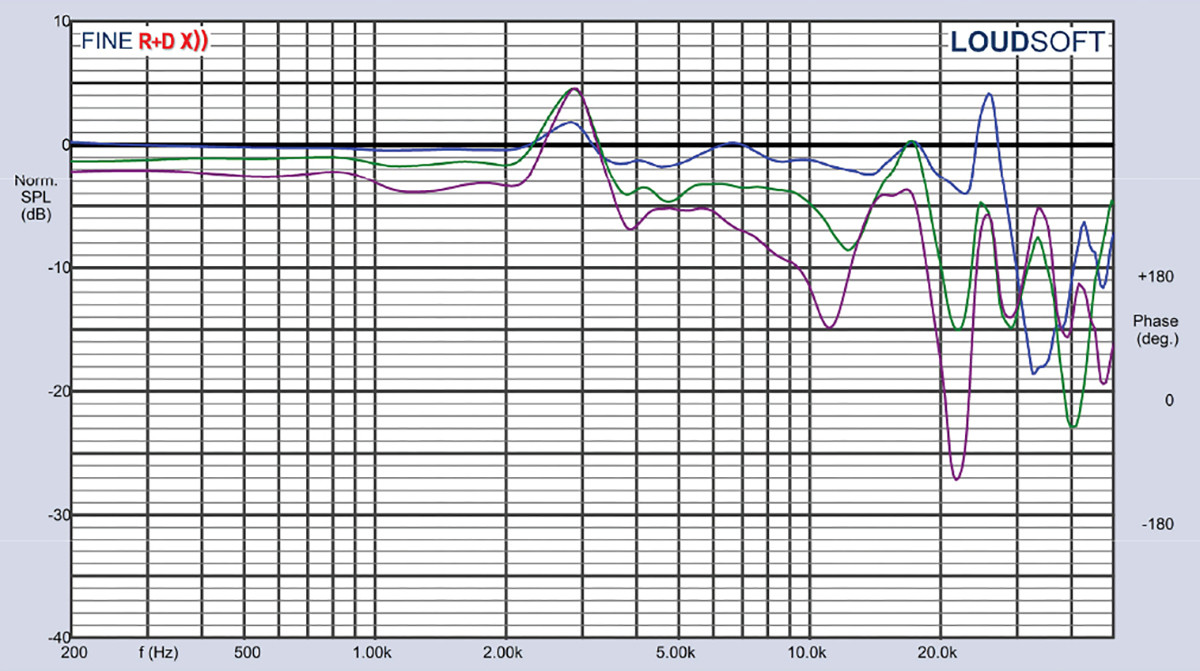
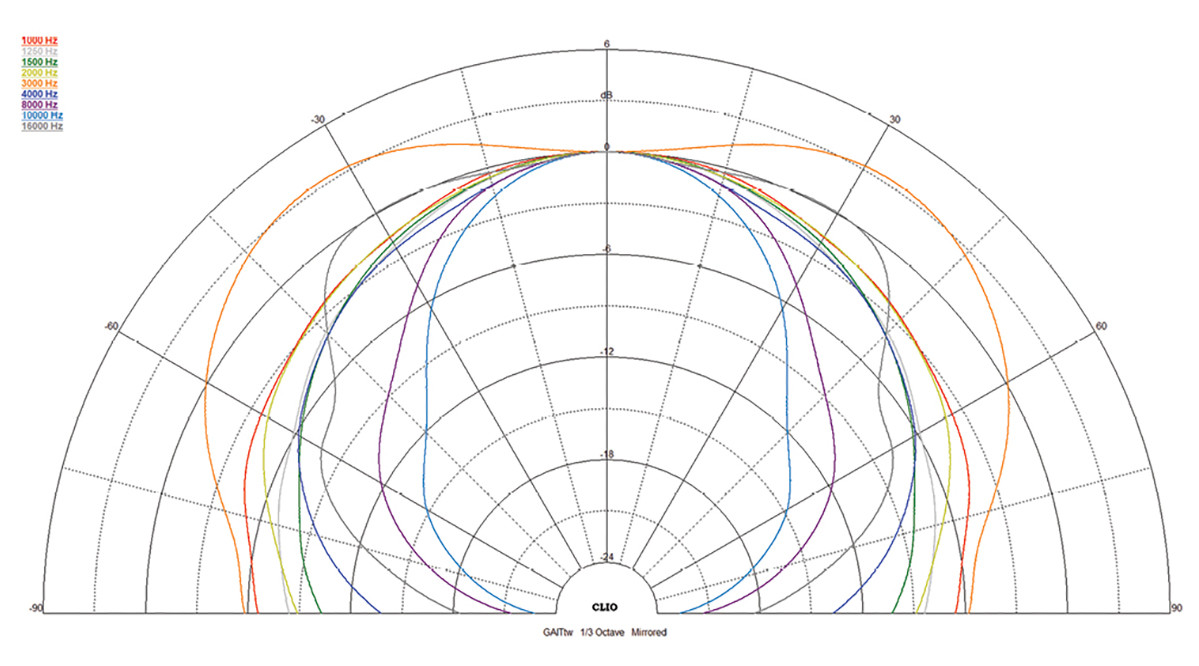
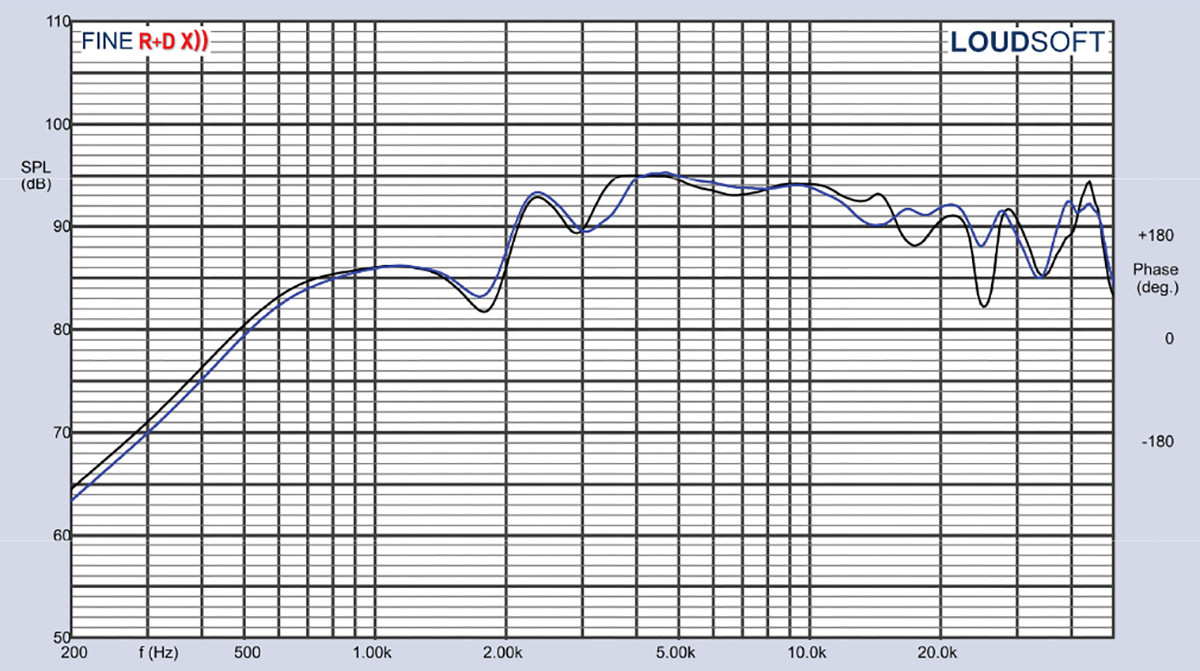
The next test procedure was to again use the Listen SoundCheck software and AudioConnect analyzer and SCM ¼” microphone to measure the impulse response with the tweeter recess mounted on the test baffle. Importing this data into the Listen SoundMap software produced the cumulative spectral decay plot (CSD) waterfall given in Figure 10. Figure 11 depicts the Short Time Fourier Transform (STFT) displayed as a color-variegated surface plot for the GAIT tweeter.
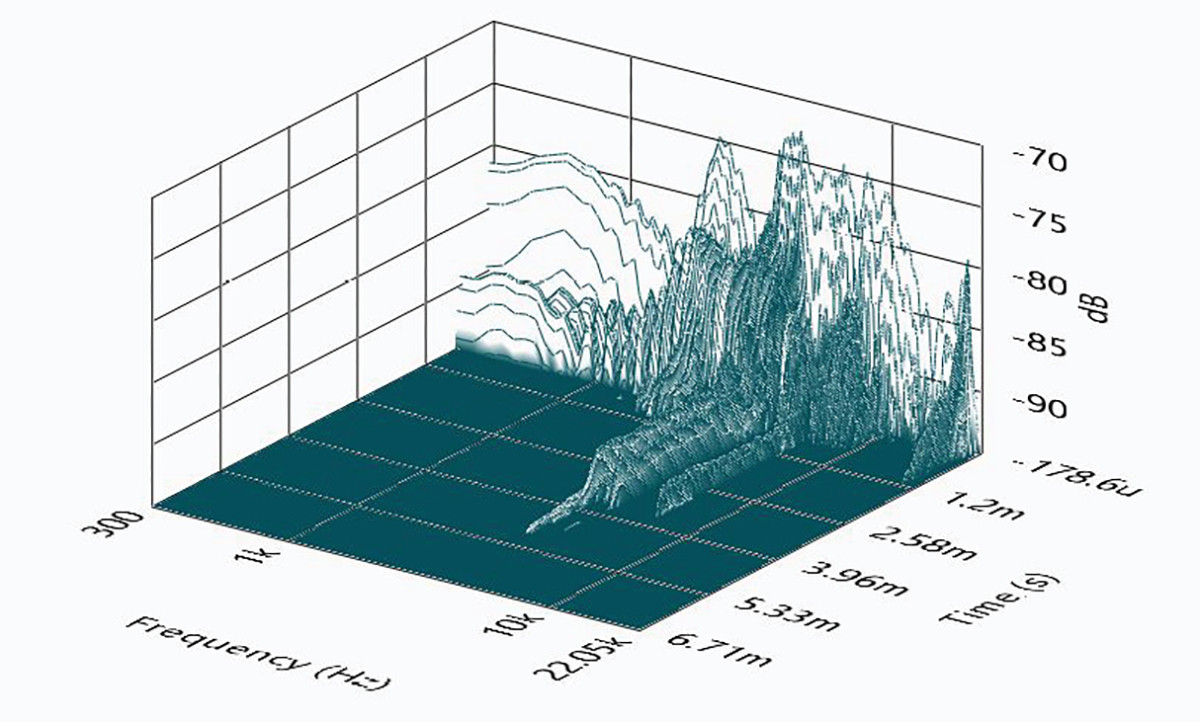
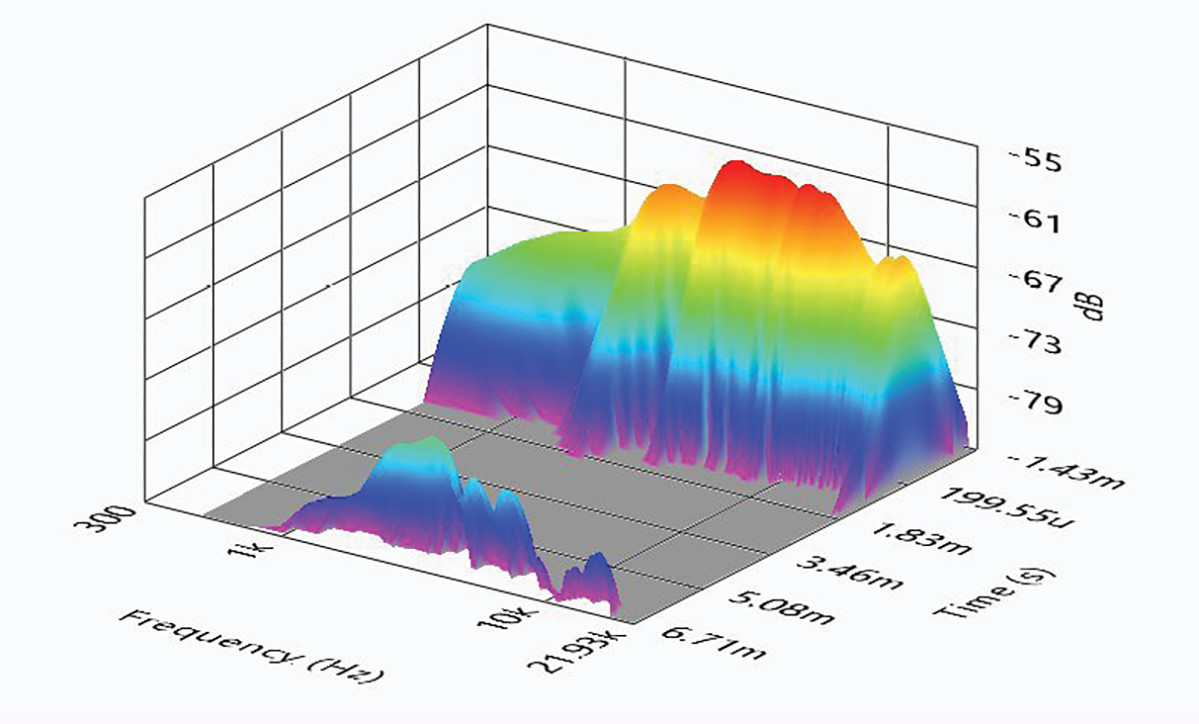
For the final test procedure using Soundcheck, I set the 1m SPL to 94dB (3.25V) using a pink noise stimulus and measured the second and third harmonic distortion at 10cm, which is depicted in Figure 12, demonstrating reasonably low third harmonic content.
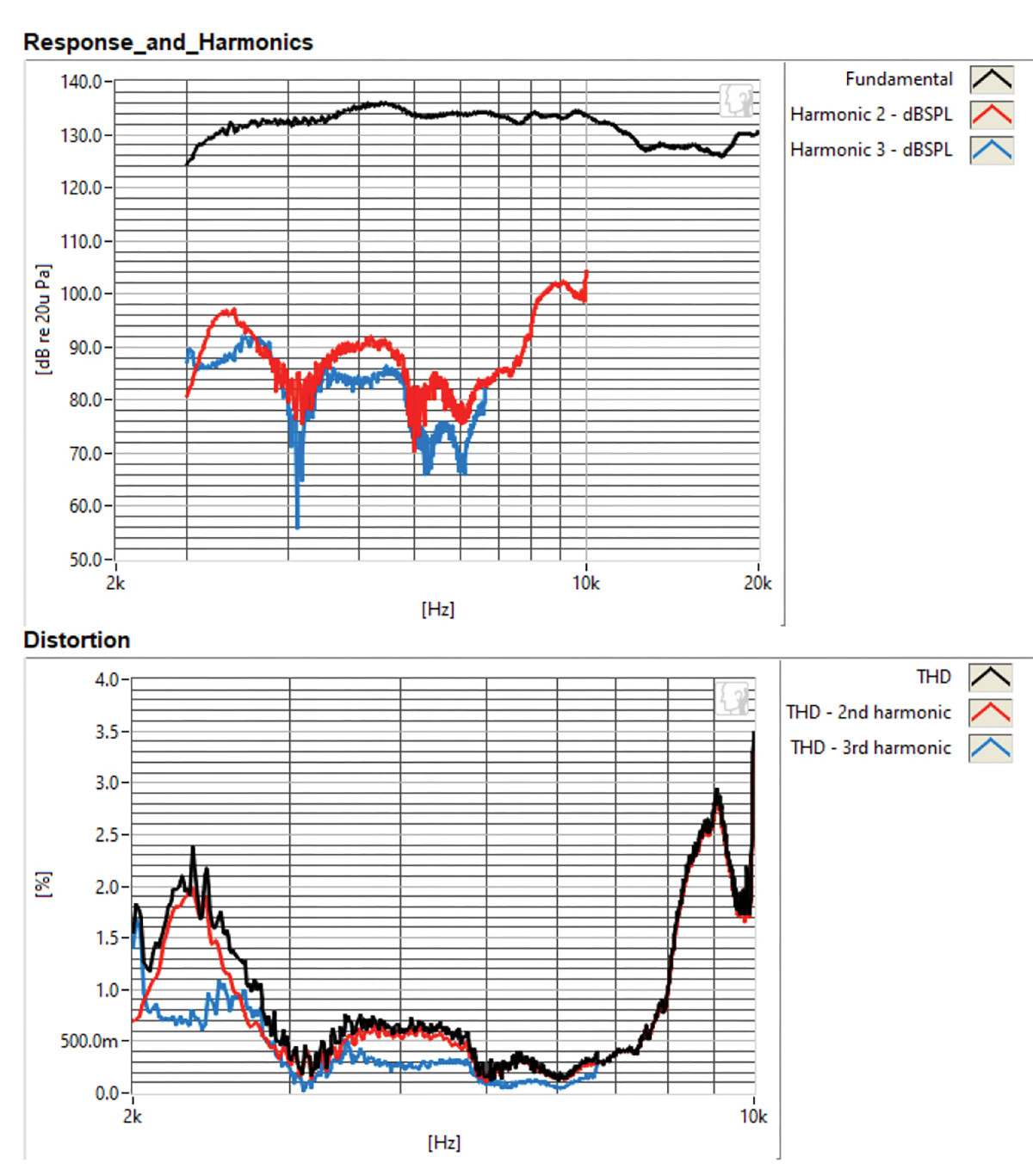
While I haven’t had the opportunity to compare the subjective timbre of the GAIT glass diaphragm to other diaphragm materials, it does look very interesting. Given the availability from GAIT of a wide variety of off-the-shelf and custom glass domes and cones (including race track shapes), investigating this technology is easily available. For more information, visit www.gai-tech.com. VC
This article was originally published in Voice Coil, March 2025
Source link







